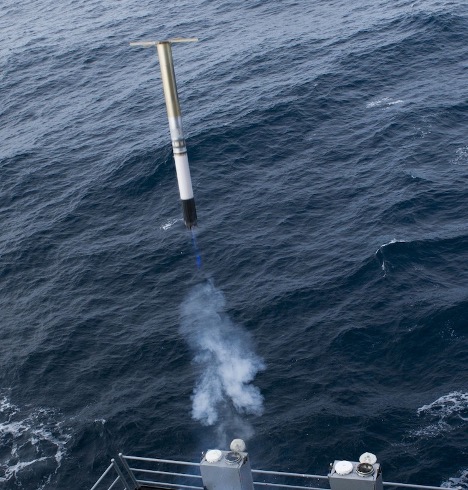I would also suggest that people look at when the plans for what became the Mogami-class started, along with when construction of the lead vessel began and when the lead ship was commissioned. IIRC the planning by the JMSDF started in 2015 and a concept vessel was offered that year, though it is possible that MHI had begun work on the design concept some time before the JMSDF sought replacements for the older JMSDF escorts. Mid-2017 MHI was selected as prime along with the new design, with construction of the lead ship starting in October 2019 and getting commissioned about 30 months later in April 2022.
To put it another way, Japan went from planning for a new class in 2015, to lead ship entering service about seven years later. That is with MHI already having done at least some work on what became the Mogami-class ahead of time, as well as Japan having a very much alive, well and continuously running shipbuilding and naval construction industry.
Having an active yard with a skilled workforce can dramatically reduce the time it takes to actually get some of the work done. Having an active industry with the various subsidiary supply chains already in place also can have a dramatic impact on how quickly some of these things can be turned out. Furthermore, I would imagine if effective prior consideration was given, then various issues which can arise during construction could be mitigated if not outright avoided.
Unfort for Australia, whilst the yards have been able to rise to the occasion for the work ordered, there has been a lack of consistency on the part of gov't. This has led (repeatedly) to booms and bust cycles in shipbuilding, with each instance forcing time and resources to get expended to re-skill rather than being able to maintain a skilled workforce, as well as forcing supply chains to get re-established as supporting companies either moving onto other things or in some cases outright closing up once orders cease.
The Hobart's weren't perfect but they were good enough.
The upgrades they are currently planned to receive show some of what a continuous build could have delivered.
Add in new digitally controlled GTs, updated propulsion and power generation diesels, improved structured and other lessons learnt.
We could have built an additional seven or eight to replace the ANZACs. No need for the ANZAC upgrades, or even such an extensive (and expensive) upgrade to the Hobart's as new ships incorporating the improvements would be entering service.
Eventually we switch over to a new, proper DDG design and do the same, just commission one new ship every two years, maintaining a fleet of ten in service and five in reserve, available for sale, transfer or reactivation in an emergency.
This is tier 1.
Tier 2 then becomes the SEA 3000 GPF.
Build twenty, ten as GPFs and as newer ships come on line reconfigure the earlier ones for other roles. MCM, hydrographics, border protection, even as APDs (fast, survivable, special forces / marine transports). One ship commissioned a year, ten in reserve.
This is basically what China is doing. They aren't upgrading old ships, let alone life extending them, they are building new ones.
Outdated destroyers are used as gp escorts, out dated frigates are transferred to the coastguard as patrol ships. The navy gets a constant flow of ever improving ships and cascades ships with plenty of life remaining to other roles.
Hell if we were serious about defence we could reclassify tier 2 as tier 3 and insert a Type 26 derivative as tier 2, doing the same.
The early 1990s, planned, budgeted force for the RAN by the 2000s was eight or nine tier 1 FFG/DDG, eight tier 2 patrol frigates, twelve corvettes, six mine hunters, six hydrographic ships and vessels, two or more supply ships and two or more amphibious ships. This was the hard, minimum, peace time navy, with an assumption of ten years warning time to expand it.
Our current global situation was anticipated almost twenty years ago, yet we persist in shrinking a fleet that was already less than half its planned minimum necessary size. People are screaming about the cost and where the crews will come from.
Answer, with modern crewing requirements the personnel numbers needed by the 1990s proposed fleet would cover a larger 2030 fleet.
Ten Hobart's and ten Hunters have a lower crew requirement than three Perth's, six Adelaide's and eight ANZACs. Twenty Mogamis have a similar crew requirement to twelve corvettes, six mine hunters, and six hydrographic vessels.
The biggest issue would be all the extra helicopters, their crews and maintainers. Then again though, look at the size and capability of the Fleet Air Arm in the early 80s.



